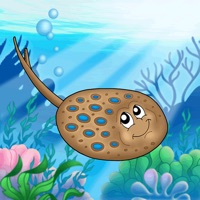ADVERTISEMENTS: The electron transport chains of bacteria (prokaryotes) operate in plasma membrane (mitochondria are absent in prokaryotes). Some bacterial electron transport chains resemble the mitochondrial electron transport chain. Paracoccus denitrificans is a gram-negative, facultative anaerobic soil bacterium. It is a model prokaryote for studies of respiration. When this bacterium grows. As a result, the electron transport chain in eukaryotes also takes place in the mitochondria. The mitochondrion is a double-membraned organelle that consists of an outer membrane and an inner membrane that is folded into a series of ridges called cristae. There are two compartments in the mitochondria; the matrix and the intermembrane space.
The Quadram Institute is looking to reduce the problems caused by microbes in the food chain by delivering an enhanced understanding of the ecology, evolution and survival strategies of pathogens in the food chain, including the drivers of antimicrobial resistance, to improve human health.
Microbes in the food chain represent a major global challenge to health and the economy, through foodborne infections and through their contribution to the problem of antimicrobial resistance.
Working in collaboration with other BBSRC-supported institutes, we are harnessing the latest genomic technologies to track the emergence, evolution and spread of foodborne pathogens in the food chain.
Our research focusses on E. coli, Salmonella, Listeria and Campylobacter, as the major causes of foodborne illness.

Our approach is to gather isolates from across the whole of the food chain, from soil, water, farms, animals, processing factories and humans, to get the fullest possible picture of the genomic epidemiology of these bacteria. Whilst many human isolates have been catalogued, comparatively few have been taken from the food chain environment, so completing this dataset will allow us to identify where foodborne pathogens arise from, and which are the major locations for bacterial communities that potentially could impact health.

Comparative genomics will allow us to identify what drives the emergence of antimicrobial resistance as well as other survival strategies, such as the formation of biofilms that resist cleaning, Salmonella’s ability to colonise plants and animals, and E. coli’s evasion of host defences.
The interdisciplinary team of researchers within the Quadram Institute is at the cutting edge of microbial cell biology, genomics, metagenomics, modelling and bioinformatics. Working strategically with partners on the Norwich Research Park and elsewhere, we will be developing novel approaches to sequencing and genomic analysis to better understand the microbiology of the food chain. This will allow us to identify new intervention strategies to stop pathogen spread in the food chain, either working through our ongoing collaborations with food production companies, or through novel techniques, potentially developed through bioprospecting for useful enzymes or probiotic bacterial strains.
Alison Mather
Epidemiology, genomics and antimicrobial resistance of bacteria
John Wain
Bacterial diversity and tropical infections
Justin O’Grady
Rapid infectious disease and foodborne pathogen diagnosis/detection
Mark Webber
Investigating the evolution of antimicrobial resistance
FOLIUM Science and Quadram Institute join forces in the fight against anti-microbial resistance
Researchers provide new insights into how antibiotic resistance develops
ViewGenomics helps understand COVID-19 in care homes
ViewCLIMB Receives Honours in 2020 HPCwire Readers’ and Editors’ Choice Awards
ViewA bacterial virus helped the spread of a new Salmonella strain
ViewThe Quadram Institute at the Norwich Science Festival
ViewWhole genome sequencing benefits for surveillance of bacteria behind gastroenteritis
ViewMarine microbes are tiny, single-celled organisms that live in the ocean and account for more than 98 percent of ocean biomass.
Marine bacteria growing on an agar plate. Image courtesy of Lophelia II 2012 Expedition, NOAA-OER/BOEM.Download image (jpg, 100 KB).
Games Powered by Create your own unique website with customizable templates. Home Popular Games. DBZ Devolution Big Red Button I Don't Even Game. Run 2 Sports Heads Cards Desktop Tower Defense. Angry Birds Pico's School Free Rider 2. Dragon Ball Games Online. Dragon Ball Z Supersonic Warriors 572.1k plays. Dragon Ball Z Super Butōden 3 453.9k plays. Dragon Ball Z Buu's Fury 272.2k plays. Dragon Ball Fusion Generator 230.9k plays. Dragon Ball Z Legacy of Goku 2 212.9k plays. Dragon Ball Z Super Butōden 2 178.2k plays. Dragon Ball Z Hyper Dimension 159.3k plays. Dbz devolutionbuddhist games.
The term “marine microbe” covers a diversity of microorganisms, including Bacteria, Archaea, Eukaryota, and viruses. These organisms are exceedingly small—only 1/8000th the volume of a human cell and spanning about 1/100th the diameter of a human hair. Up to a million of them live in just one milliliter of seawater.
Microbe Chain
Despite being found everywhere on Earth—in your belly, dirt, the oceans—the diversity and distribution of microorganisms remain under-sampled and uncharted, especially in the deep sea.
We know that microbes are the Earth’s processing factories of biological, geological, and chemical (biogeochemical) interactions. Most marine microbes exist in highly organized and interactive communities that are versatile, complex, and difficult to analyze. They account for more than 98 percent of ocean biomass and possess as much variability as the environments they inhabit.
These organisms are capable of existing in practically any environment and garnering energy from a variety of sources, ranging from solar radiation to chemosynthesis. They play many different roles in the marine environment, from being the base of the food chain to controlling much of the flow of marine energy and nutrients and being essential to the ocean’s health.
Microbe Chain
Marine microbe communities can evolve rapidly in response to environmental shifts and could be used as indicators of ocean change. In fact, marine microbes can be “the canary in the coal mine” for the marine environment. In addition, they are also drivers of change in the ocean. Consequently, it is very important to acquire baseline information about these microorganisms against which future changes could be identified.
